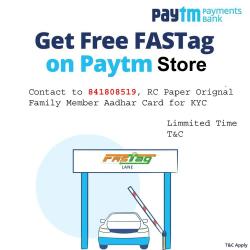Unbanked people are increasingly gaining access to financial services through digital channels. Banks, microfinance institutions, mobile operators, and other providers are using mobile phones and point-of-sale devices, along with networks of small-scale agents, to offer basic financial services at greater convenience and lower cost than traditional banking allows. Also referred to as branchless banking, these digital services offer great promise for better serving poor customers.
Historically, the high cost of building and operating traditional bank branches has been a major obstacle for reaching poor customers with financial services. Brick-and-mortar branches are expensive for banks to maintain in far-flung communities, while traveling to urban areas is costly for many rural customers. Digital finance helps providers overcome these barriers: Agents equipped with mobile phones are the cheapest channel for processing small-value transactions for poor people at low cost and at scale.
Early successes underscore the potential of mobile technology in particular to advance financial inclusion. In Bangladesh, for example, more than one in five people were using mobile financial services at the end of 2013 – less than two years after these services were first launched. In Tanzania, over half of mobile phone owners are active users of mobile money available through a competitive landscape of seven providers. In Kenya 12.2 million people, or two-thirds of all adults, are active customers of a mobile phone-based money transfer and payments service called M-PESA. An M-PESA-linked bank account called M-Shwari in Kenya and M-Pawa in Tanzania has also proven popular: Customers can open the accounts directly from their M-PESA wallets, easily accessing loans (without requiring any further documentation) and earning interest on savings.

Photo Credit: Sudipto Das, 2012 CGAP Photo Contest
Digital payment services like M-PESA, Tigo Pesa, Airtel Money, Easypaisa, B-Kash and others help advance financial inclusion because they allow providers to process frequent, low-value transactions remotely and deliver a broad range of financial services, from payments to insurance, at near marginal cost.
Two initiatives at CGAP are working to explore how digital finance can be taken further, beyond simply powering remote payments and financial services.
- Digital Finance “Plus” explores how the ability to process small-value payments digitally can help extend critical services and utilities, such as clean water, health, energy, and education, to previously underserved communities.
- Digital Finance Frontiers explores the role of digital data in the relationship between customers and financial services providers. As more and more people begin to use mobile phones and digital financial services, customers build up credit histories and data trails. With permission, providers can tap this information to get to know their customers digitally and offer them products better suited to their needs.
Another initiative at CGAP, Inclusive Payment Ecosystems, focuses on country success cases in South Asia and sub-Saharan Africa where digital payments are widely used and provided in a diverse and competitive ecosystem. This involves working directly with businesses and on the regulatory and policy framework needed to protect customers while at the same time support innovation.
Despite the promise of digital financial services to reach the unbanked, challenges remain. Many providers have struggled to develop compelling products that customers actively use. An analysis of the Kenya Financial Diaries data shows that even in Kenya, where the majority of adults use mobile money, less than 1 percent of total transactions among low-income households are digital. In India, where 22 percent of the world’s unbanked reside and over 900 million mobile phone connections exist, 0.3 percent of adults use mobile money. On the data side, customers’ privacy also must be weighed and balanced with the potential of data to power new financial services.
Resources
Akhilesh Rajbhar
Asst Officer in DWorld
(Student of Webdesign)
7839108264,7398048893
mail ID - akhileshrajbharazm@gmail.com










 This is a free homepage created with page4. Get your own on www.page4.com
This is a free homepage created with page4. Get your own on www.page4.com